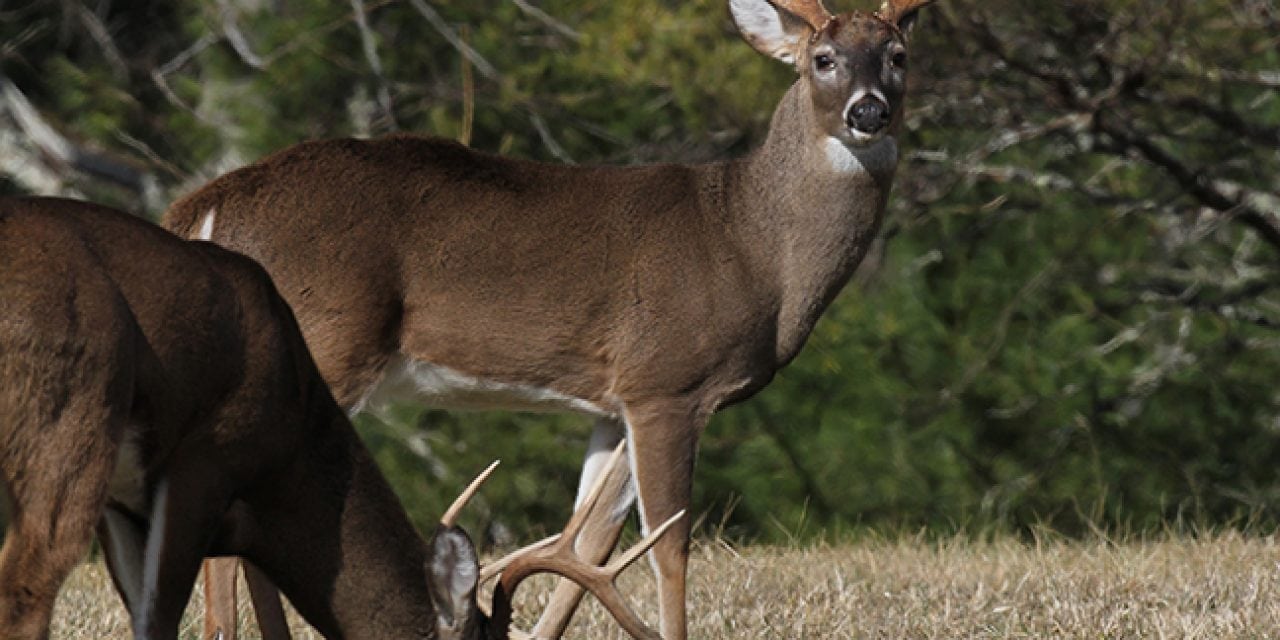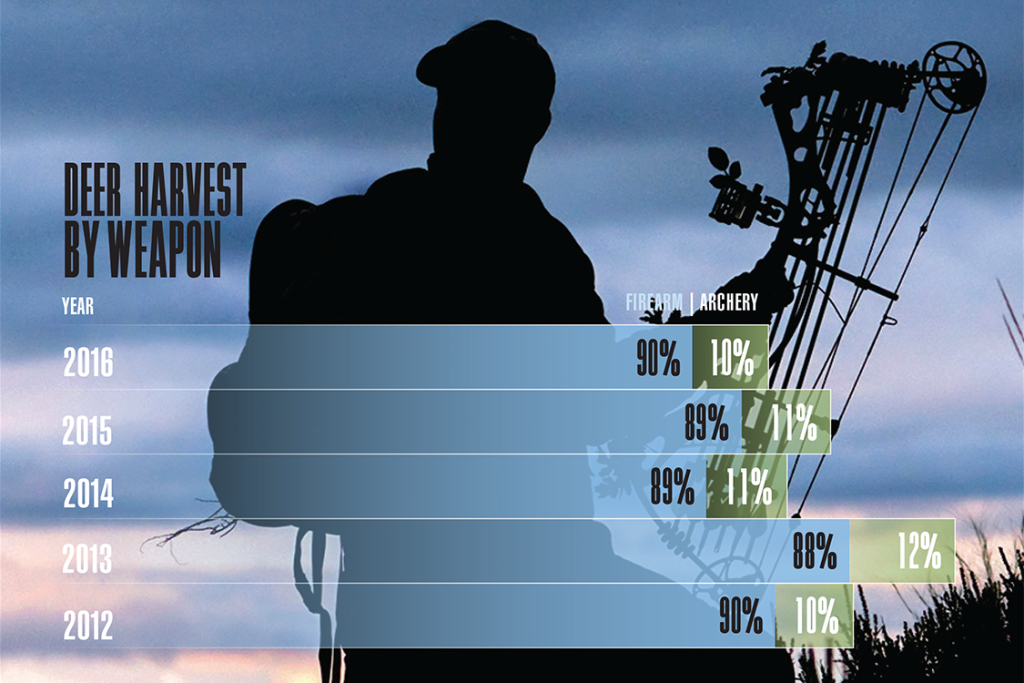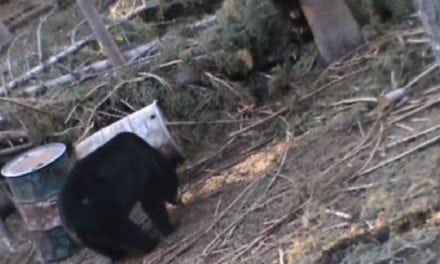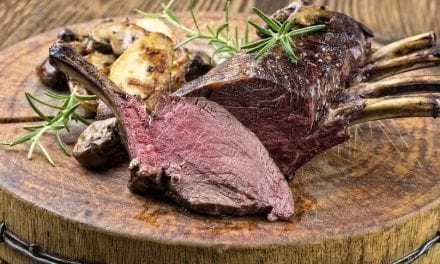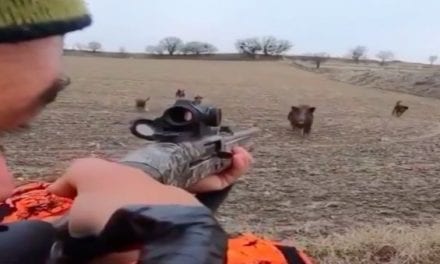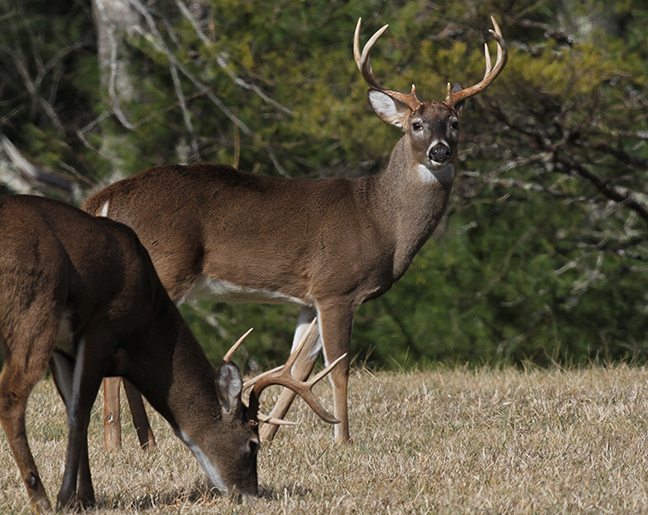
Photo By Ron Sinfelt
North Carolina hunters reported harvesting 149,811 deer last season, down 7.8 percent from the 2015-16 season harvest of 162,558. Hunters killed fewer deer in every district of the state, with declines ranging from a 1.2 percent drop in District 9 to 14.1 percent in District 5.
Almost exactly half of the deer that hunters killed were bucks; about 6 percent were button bucks, and 43 percent were does. The age and sex percentages have remained the same for many years.
“We have roughly 1 million deer,” said Jon Shaw, the N.C. Wildlife Resources Commission’s Deer Biologist. “We gained some control of the population by doe harvest, finally reaching the tipping point. In 2007, when we implemented bonus antlerless harvest report cards and unlimited antlerless harvest, antlerless harvest increased 28 percent. It has remained high, decreasing less than 1 percent annually.”
Besides liberalized antlerless deer harvests over time, other factors influenced the harvest decline. Hemorrhagic disease contributed to declines, with significant outbreaks in 2012 in Districts 7 and 8, and in 2014 in District 3. Hemorrhagic disease is a common virus that midges transmit. Some deer die from HD every year, usually in late summer and early fall.
“We are seeing bigger outbreaks occurring more frequently than they used to,” Shaw said. “We did not have any severe outbreaks last season, but Dist. 5 had the most noticeable, with around 20 confirmed cases in nearly every county. Another county with high HD incidence was Robeson, in Dist. 4, where we had 40. For every deer found, a many more infected deer die where no one sees them.”
The quality of habitat may be in decline due to land use practices, including development and increased efficiency in land management, such as farming and forestry practices. Shaw said a study is underway to tweak the model that determines the acreage of huntable deer habitat, which may be higher than has been used in the past.
Dr. James Kroll and Pat Hogan discuss the impact of wind on deer behavior.
(Via North American Whitetail)
Predators may be taking a greater toll. Coyotes and other predators have increased over the last two decades. A Fort Bragg study shows that coyotes can have significant impacts on fawn recruitment.
“These impacts are highly variable across time and landscape,” Shaw said. “Predators alone will not decimate deer populations, but their impacts may be additive with other factors that cause declines. In areas where deer are declining, the major factors are harvest, predators, disease and habitat. The most easily addressed is doe harvest. However, we can do whatever we can with the other factors. You have to remove more than 60 percent of the coyote population every year to drive total numbers down. A sustainable deer harvest is 30 percent, but it may be lower than that now, as a result of coyote predation. To get a better idea of these other factors, we are undertaking a game camera study and initiating statewide deer ecology research.”
One new tool Shaw mentioned was the Deer Hunter Observation Survey, with the first three years of data processing underway. His preliminary analysis showed a fawn-to-doe ratio of about 0.7, better than he expected.
“We sent a massive annual survey to 200,000 selected big game hunters in 2016,” he said. “We will be presenting the results in public forum, along with biological evaluation results, to get feedback from hunters. The survey scenarios gave three randomly selected options regarding gun season, muzzleloader season and bag limits. The range of levels included what hunters currently have and what it would take to reach our biological optimum. It will give us a good idea of what is most important regarding the season length and bag limits and what trade-offs hunters are willing to make.”
Such surveys are important for gauging hunter psychology and enacting regulations they will accept. The annual hunter survey is an eye-opener, because it generates the best information about using harvest as a management tool. Biologists were still sorting out the 2015-16 data. Therefore, the latest big game hunter survey for which data was available was conducted in 2014-15, when 233,590 hunters hunted 373,074 days to harvest 193,789 deer. The most striking statistic is that the actual harvest was significantly higher than the officially reported harvest, with a compliance rate of 70 percent. Biologists must consider this underreported harvest when they set seasons and bag limits. Hunters hunted an average of 15.97 days, with a mean harvest per day of 0.05 percent and a harvest rate of 0.83 deer per hunter. Most hunters, 53.57 percent, did not harvest any deer.
Another factor could be a declining unemployment rate. When hunters put in more work hours, they are not able to put as many hours in the woods. Over time, trends in the big game hunter surveys may shed more light on employment numbers versus hunter effort.
Weather was probably a factor in harvest declines in coastal Districts 1, 2, 3 and 4, where hurricanes Hermine and Matthew struck. Hermine was a watered down tropical storm when it hit. However, it arrived on the cusp of archery season and rendered roads impassable. Before its floodwaters dissipated, Matthew struck, leaving the most severe flooding ever experienced in some counties in its wake. For many hunters, it wiped out coastal muzzleloader season and the first part of the firearms season. Hunters could not get around in many places they were trying to hunt, including game lands, until crews could repair major highways and secondary roads. On individual properties, hunters could not plant food plots or repair and maintain stands and other hunting infrastructure until late in the season.
With the 2016-17 harvest dipping 11 percent below the 10-year average to its lowest point since 2005, it looked like the aftermath of a perfect storm of adverse events. However, Shaw points out reasons for optimism in the upcoming 2017-18 season.
“At the statewide level, we seem to be having a declining trend, but not a strong declining trend,” he said. “However, in the eastern region, it is a long term trend that has been occurring since about 2008. The piedmont harvest has remained stable over the long term and, in the mountains, the trend in overall harvest is increasing. It is just that the eastern region covers half the state, so it drives much of the harvest trend. The lower total harvest is not a concern for the deer herd, but it is for our hunters and what they like to see and what they are used to seeing. When they go deer hunting, they like to see deer and deer sign. Going forward, we will be listening to what they want and doing what they say.”
CHECK OUT THESE SPECIAL PERMIT HUNTS
The Commission has established several permit deer hunts at its new J. Morgan Futch Game Land Texas Plantation Tract. These include an over-the-counter permit hunt for muzzleloader and archery seasons (Item No. 7741), a general draw permit hunt for specified dates and any legal weapon (Item No. 7742), a youth-and-adult either-sex hunt (Item No. 7743) and an apprentice either-sex hunt (item No. 7744). The hunts occur on dates that do not interfere with the waterfowl season, which is the main focus of the game land. The application deadline was Sept. 1, so hunters should check the website for any leftover permits following the drawing and mark their calendars for next season.
The Commission also hosts several other great permit hunts. One of the best is the youth-and-and adult hunt at R. Wayne Bailey-Caswell Game Land (Item No. 8803). Hunters draw for five available blinds, which the Commission furnishes, making them easier hunts for the participants than many other permit hunts. Only shotguns with slugs or buckshot are legal for this hunt. The application deadline is Oct. 1.
Mecklenburg County Park and Recreation hosts two permit deer hunts. The first is a muzzleloader hunt (8100) and the second is a shotgun hunt (8101). Hunters must be age 16 or older and attend an advance orientation. Hunters apply for specific dates at one of three locations: Cowan’s Ford Refuge, Latta Plantaion and McDowell Nature Preserve. The application deadline is Oct. 1.
The post 2017 North Carolina Deer Forecast appeared first on Game & Fish.

